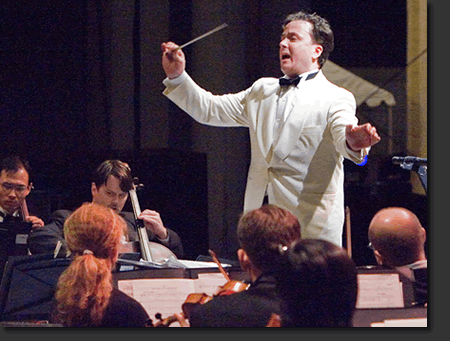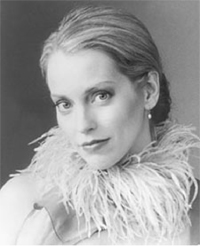Platt, Boca Symphonia serve up rarities with charm and style
 The Boca Raton Symphonia has made yet another leap forward in presenting a program of mostly rare treats. Given the fine acoustics of the Roberts Theater at Saint Andrew’s School and the Sunday afternoon concert time, the venue was packed with subscribers and visitors curious about the orchestra’s growing reputation.
The Boca Raton Symphonia has made yet another leap forward in presenting a program of mostly rare treats. Given the fine acoustics of the Roberts Theater at Saint Andrew’s School and the Sunday afternoon concert time, the venue was packed with subscribers and visitors curious about the orchestra’s growing reputation.
Conductor Alexander Platt began his program with Mendelssohn’s Hebrides Overture, also known as Fingal’s Cave. The piece was inspired by the rugged island coast off western Scotland and the wild surf that hammers the region. The work’s lyrical beauty and stormy music were interpreted with considerable attention to detail and the orchestra responded with dramatic sweep. Platt is especially good at achieving a balanced sound from all sections of his group. Nothing dominates unless the music requires, and the brass is free of the blare that plagues many orchestras. The tempos were especially flexible, and gave ample opportunity for the music to sing without metronomic restraint.
Ravel’s beautiful Pavane for a Dead Princess is always a challenge for the exposed horns. Even with a few minor fluffs, the piece came across as a supple essay in restraint, delicacy, and enchanting grace as Platt showed his skill in effectively handling dynamics within a limited range.
Libby Larsen, born in Delaware but now an active fixture in the music world of Minnesota, is currently serving a two-year residency at Florida Atlantic University. Her Sonnets From the Portuguese is a song cycle setting six sonnets by Elizabeth Barrett Browning for soprano and chamber orchestra. Originally written in 1993 with soprano Arlene Auger in mind, the very talented Nancy Allen Lundy (below) performed it for the Boca audience.
 Larsen’s accessible compositional style is definitely not one to send her audience running for the exits. Nor, however, is it one to ignore what has been happening in music during the past hundred years. Although the
Larsen’s accessible compositional style is definitely not one to send her audience running for the exits. Nor, however, is it one to ignore what has been happening in music during the past hundred years. Although the
cycle concludes with How do I love thee? there is nothing emotionally disturbing about the semi-lyrical setting. The orchestration is colorful, the vocal lines undistorted, and imaginatively set, and the harmonic language expressive and mostly consonant. The only thing lacking was memorability.
Lundy projected well and, in her attractive gown, provided an image of great charm along with the ability to float her tone when needed. For vocal buffs, thoughts of Thomas Pasatieri and Tobias Picker would place Larsen’s settings in pretty fair context.
Tchaikovsky’s Orchestral Suite No.1 probably made its South Florida premiere on Sunday. Why this gloriously entertaining music is not more frequently performed is hard to fathom. The six-movement Suite followed the composer’s Fourth Symphony but more closely belongs to the world of his ballet music.
Despite Tchaikovsky’s use of Baroque dance forms, the music remains clearly in the realm of Romanticism. All of the composer’s well-known signatures are there, and all of them come up freshly minted. Conductor Platt took and explained his liberty in reordering several of the interior movements. It was effective enough and did no damage to any Tchaikovskian logic.
Once again the Boca Symphonia, from its silken strings and well mannered, but effective brass, to its superlative woodwinds and percussion, showed themselves to be a major force in the musical life
of South Florida. May their ranks continue to grow, and may conductor Platt be there to help them get there.
Posted in Uncategorized
Leave a Comment
Mon Feb 9, 2009
at 1:07 pm
No Comments
